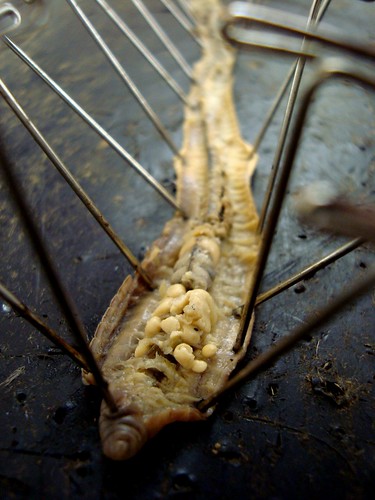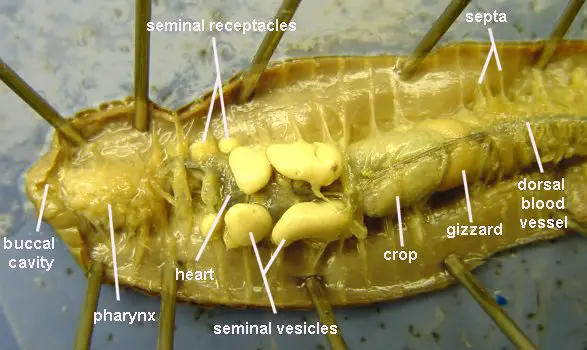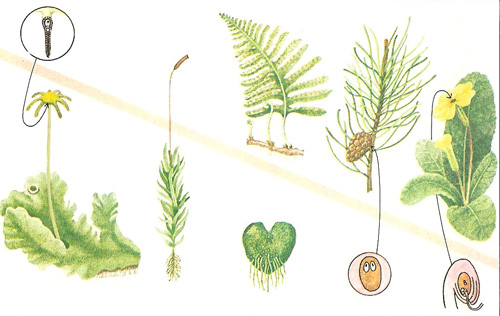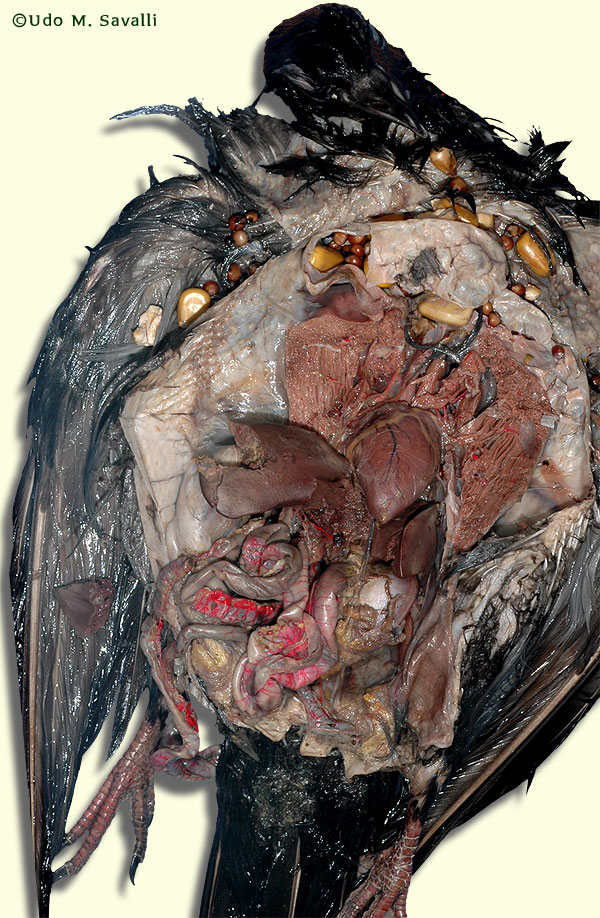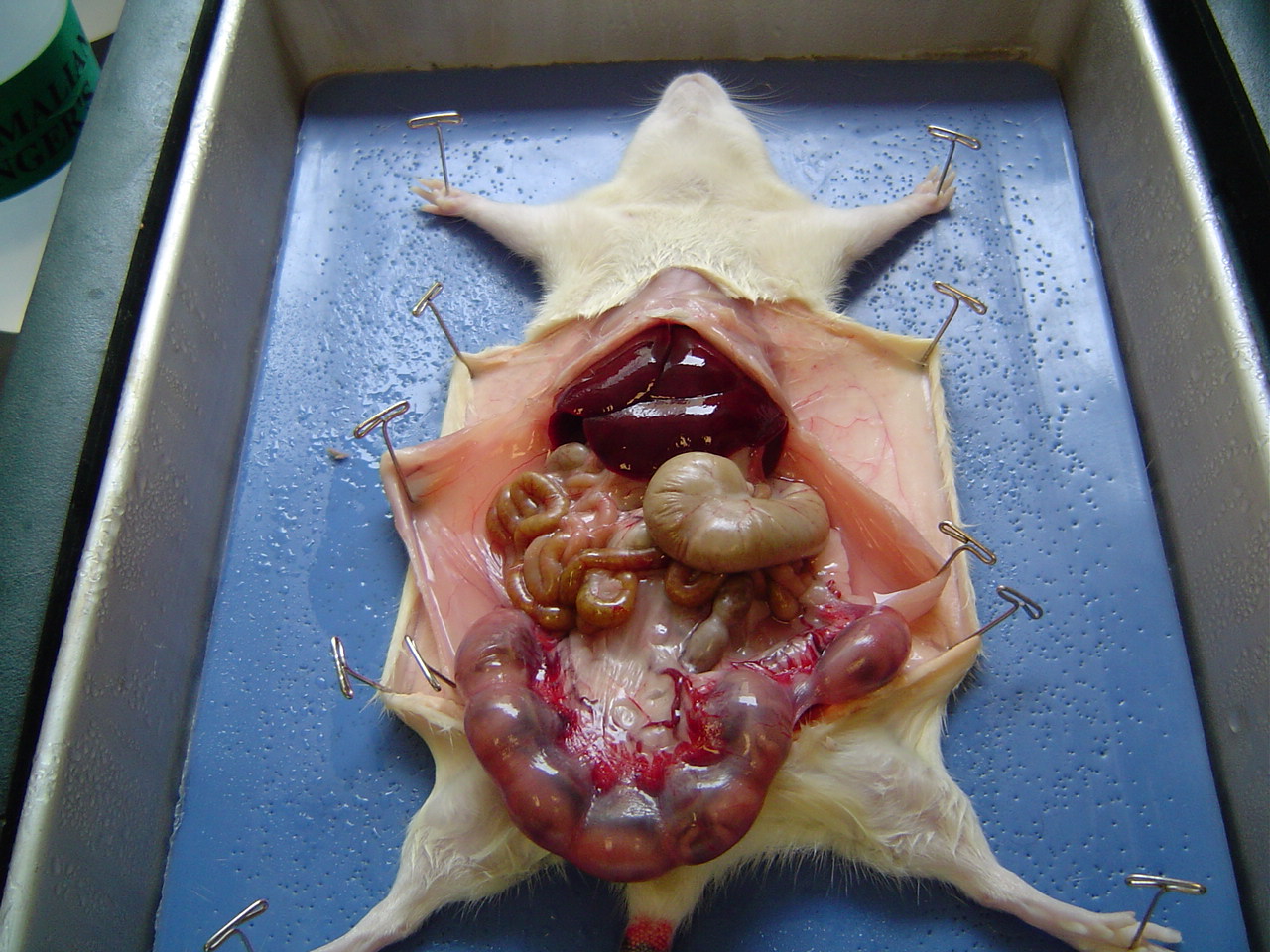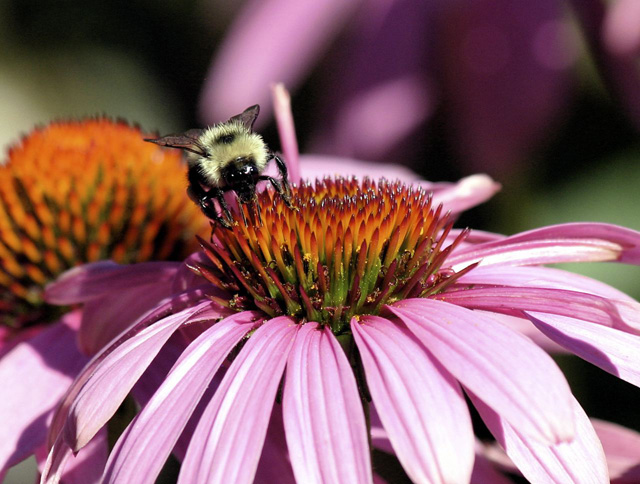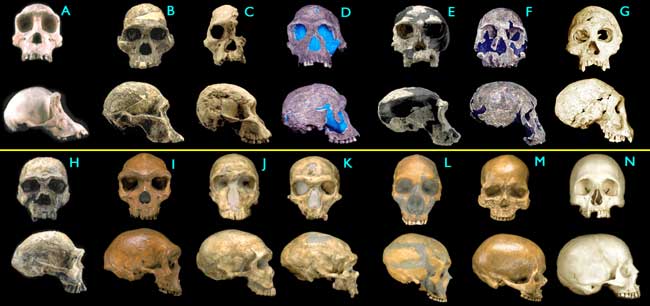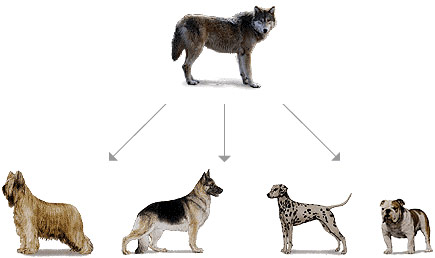It's already one year, and I am going to become a sophomore and say "good bye" to my biology class. I have many achievements for this class, such as getting A's, work on my notebook, accomplish the project, doing the labs, and cooperating with my classmates. However, I also have some failures in this class, such as going to class late, turning the projects late, and getting bad grades on some tests. Indeed, I have to thank Ms. Malonek for her discipline and teaching hard for us. I learned that I always have to be modest and listen to the instruction, so I will never make mistakes in the future. The knowledge that I learned from my biology class, such as the systems, cells, animals, reactions, or evolutions, will be unforgettable.
Thursday, May 26, 2011
Which specimen that we have dissected so far seems most like humans? Why?
 We already dissected several specimen in our biology class, and frog is the speciman that seems most like humans so far. One of the main reasons is that both frog and human are vertebrate with a cephalizated nervous system. In addition, frogs have kidneys, gall bladders, livers, spleens, and livers just like what humans have. Therefore, frogs and humans are close relatives. Both humans and frogs eat meat, so this can be another reason. Frogs also have a complete digestive system, and humans have, too. Unlike some other animals, frogs have lungs instead gills, and the humans do have lungs. Finally, the similarities between humans and frogs are much more than the differences between them.
We already dissected several specimen in our biology class, and frog is the speciman that seems most like humans so far. One of the main reasons is that both frog and human are vertebrate with a cephalizated nervous system. In addition, frogs have kidneys, gall bladders, livers, spleens, and livers just like what humans have. Therefore, frogs and humans are close relatives. Both humans and frogs eat meat, so this can be another reason. Frogs also have a complete digestive system, and humans have, too. Unlike some other animals, frogs have lungs instead gills, and the humans do have lungs. Finally, the similarities between humans and frogs are much more than the differences between them.Thursday, May 19, 2011
Compare two of the organisms that we have dissected Discuss at least 2 similarities and 3 differences
We dissected many organisms so far, and these organisms have various similarities and differences. For example, we dissected both crayfish and fish. There are many similarities between crayfish and fish. Both crayfish and fish have gills which is the respiratory organ that animals use to breath under water. In addition, another similarities between crayfish and fish is that both of these animals have the whole digestive system, such as esophagus, stomach, big and small intestines and the anus. Furthermore, both of crayfish and fish are internal fertilization and external reproduction. On the other hand, there are still some differences between these two animals. For instance, the crayfish has hard external shell which is made by carapace, but the fish has the soft body, and it is made by the scales. The crayfish has swimmerets to help swimming, but the fish has fins in order to swim. The mouth parts of crayfish and fish are also different since the mouth part of crayfish is mandible, yet the fish has jaws.
Wednesday, May 4, 2011
What was most interesting about this week's dissections?

 For this week, the most interesting dissection is the crayfish because I enjoy to see the different parts of the crayfish, and the most interesting part is to identify all the organs of the crayfish. In addition, I also use the scissors to cut through body of the crayfish and take off the carapaces of the crayfish. I counted the number of the gills inside the crayfish, and I cut all the legs and claws off from its body. In order to see the whole body of the crayfish, I take off all the body segments from the crayfish and use the dissecting needle to touch every organ inside the crayfish's body. Another thing that surprises me is that the vessel system of the crayfish since the blood stream is filled all over the body of the crayfish. Although I eat the crayfish all the time, I never realize the interesting things that inside the body of the crayfish. After the dissection of the crayfish, I carefully examine the whole body system of the crayfish and sketch out the basic anatomy of the crayfish.
For this week, the most interesting dissection is the crayfish because I enjoy to see the different parts of the crayfish, and the most interesting part is to identify all the organs of the crayfish. In addition, I also use the scissors to cut through body of the crayfish and take off the carapaces of the crayfish. I counted the number of the gills inside the crayfish, and I cut all the legs and claws off from its body. In order to see the whole body of the crayfish, I take off all the body segments from the crayfish and use the dissecting needle to touch every organ inside the crayfish's body. Another thing that surprises me is that the vessel system of the crayfish since the blood stream is filled all over the body of the crayfish. Although I eat the crayfish all the time, I never realize the interesting things that inside the body of the crayfish. After the dissection of the crayfish, I carefully examine the whole body system of the crayfish and sketch out the basic anatomy of the crayfish.Thursday, April 28, 2011
What surprised you from the worm's dissection?
The worm dissection surprised me because its long body and the weired stuffs inside its body. When I cut the worm from its anus, I saw some black dusts falling off from the worm. I used the needles to hold the worm, and I felt the smoothness of the skin of the worm. I saw there are both external and internal tissues and muscles of the worm. In addition, I can see the vessel system and digestive system of the worm, so I can understand the body system of the worm. Even though, I did not finish the whole dissection of the worm, I was still surprised by the half of the dissection. On the other hand, I hope that I can finish the worm dissection and totally comprehend the function of each parts inside the worm.
Monday, April 18, 2011
Alternation of Generations
 Alternation of generation is a word that describes the plant's life cycle. It is a multicellular diploid form with a multicellular haploid form, and the elements of alternation of generation are two haploid gametes, two diploid gametes, sporangia, and gametangia. The two processes of alternation of generation are meiosis and fertilization. Meiosis is reduction of chromosomes from diploid number to haploid number, and fertilization is the fusing of chromosomes from haploid number to diploid number. Similar to animals, the alternation of generation is also the sexual reproduction of plants, and it is an essential part of plants. On the other hand, fungi or algae have alternation of generations as well as plants; hence, this is not a unique life cycle of plants.
Alternation of generation is a word that describes the plant's life cycle. It is a multicellular diploid form with a multicellular haploid form, and the elements of alternation of generation are two haploid gametes, two diploid gametes, sporangia, and gametangia. The two processes of alternation of generation are meiosis and fertilization. Meiosis is reduction of chromosomes from diploid number to haploid number, and fertilization is the fusing of chromosomes from haploid number to diploid number. Similar to animals, the alternation of generation is also the sexual reproduction of plants, and it is an essential part of plants. On the other hand, fungi or algae have alternation of generations as well as plants; hence, this is not a unique life cycle of plants.Thursday, April 14, 2011
Why is dissection an important part of a biology curriculum? Which animals and/or plants should be included in biological studies?
 Dissection is usually the process of disassembling and observing something to determine its internal structure and as an aid to discerning the functions and relationships of its components. Dissection is important to the biology curriculum because the students need to understand what looks like inside the organisms, and see the muscle and tissue structures. The variety of animals or plants need to be included in the biological study because the students have to know the different structures and functions of various kinds of organisms. For example, mammals, reptiles, fishes, insects, birds, flowers, trees, and fungi can all be the part of biological study for dissection.
Dissection is usually the process of disassembling and observing something to determine its internal structure and as an aid to discerning the functions and relationships of its components. Dissection is important to the biology curriculum because the students need to understand what looks like inside the organisms, and see the muscle and tissue structures. The variety of animals or plants need to be included in the biological study because the students have to know the different structures and functions of various kinds of organisms. For example, mammals, reptiles, fishes, insects, birds, flowers, trees, and fungi can all be the part of biological study for dissection.
Thursday, April 7, 2011
Community Interaction
Competition is a contest between individuals, groups, animals, etc. for territory, a niche, or a location of resources. ex: Two cats snatch the same rat.

Commensalism is a class of relationship between two organisms where one organism benefits but the other is neutral. ex: Cattle got insects after the livestocks walk by.
Mutualism is he way two organisms biologically interact where each individual derives a fitness benefit. ex: The relation between ungulate and bacteria.
Predation is a predator feeds on its prey. ex: The snake feeds a mouse.

Commensalism is a class of relationship between two organisms where one organism benefits but the other is neutral. ex: Cattle got insects after the livestocks walk by.
Mutualism is he way two organisms biologically interact where each individual derives a fitness benefit. ex: The relation between ungulate and bacteria.
Predation is a predator feeds on its prey. ex: The snake feeds a mouse.
Wednesday, March 23, 2011
Free Choice: The Things That I learned From Ms. Malonek's Class
 I've been in Ms. Malonek's Biology class for more than half year, and I really learned a lot of knowledge from this class. For example, I learned about the cells, and the different uses of each part in the cell. In addition, I also learned the evolution of humans, so I understood where were we coming from. Photosynthesis and cell respiration are the knowledge that I learned form seventh grade, but I still learned these deeply in Biology. I enjoyed the labs we've done in the class, too since I can learn some knowledge from these experiences. I met many friends in this class, and we can discuss and learn from each other. Rather than the knowledge from the book, Ms. Malonek always gives us some additional information outside of the textbook. To sum up these reasons, I learned a lot of stuffs in my biology class.
I've been in Ms. Malonek's Biology class for more than half year, and I really learned a lot of knowledge from this class. For example, I learned about the cells, and the different uses of each part in the cell. In addition, I also learned the evolution of humans, so I understood where were we coming from. Photosynthesis and cell respiration are the knowledge that I learned form seventh grade, but I still learned these deeply in Biology. I enjoyed the labs we've done in the class, too since I can learn some knowledge from these experiences. I met many friends in this class, and we can discuss and learn from each other. Rather than the knowledge from the book, Ms. Malonek always gives us some additional information outside of the textbook. To sum up these reasons, I learned a lot of stuffs in my biology class.Wednesday, March 16, 2011
Compare and contrast two biomes describe them in detail include pictures of plants and animals you are liklely to see
 There are two distinctly different biomes in the Earth, which are terrestrial biome and aquatic biome. Basically, both biomes contains animals and plants, but one is on the land and another is in the water. In terrestrial biome, there are reptiles, insects, mammals, and birds. There are also desserts, forests, and grasslands in the terrestrial biome. On the other hand, the aquatic biome means the oceans, and it also has its unique organisms. In aquatic biome, there are various kinds of fish and reeds. In addition, there are still some mammals in the ocean. Oceans, lakes, pools, streams, and rivers are all the parts of aquatic biome. The terrestrial biome is similar to aquatic biome since they are both on the Earth with different organisms live in. To sum up these reasons, the are several similarities and differences between terrestrial and aquatic biomes.
There are two distinctly different biomes in the Earth, which are terrestrial biome and aquatic biome. Basically, both biomes contains animals and plants, but one is on the land and another is in the water. In terrestrial biome, there are reptiles, insects, mammals, and birds. There are also desserts, forests, and grasslands in the terrestrial biome. On the other hand, the aquatic biome means the oceans, and it also has its unique organisms. In aquatic biome, there are various kinds of fish and reeds. In addition, there are still some mammals in the ocean. Oceans, lakes, pools, streams, and rivers are all the parts of aquatic biome. The terrestrial biome is similar to aquatic biome since they are both on the Earth with different organisms live in. To sum up these reasons, the are several similarities and differences between terrestrial and aquatic biomes. Wednesday, March 9, 2011
Which level of a food pyramid is the most important?
Based on the food pyramid, I discover that the grains are the most essential level of humans. Most cereals have essential amino acids lysine. In addition, only 15 percent of grains contain fat and calories. The most important elements of grains are their vitamins and minerals. Nevertheless, more minerals of grains are on the brans or germs instead of the components inside, people always take the healthier things aways from them. The brans are composed of soluble and insoluble fibers. The soluble fibers can lower the cholesterol in the blood, and the insoluble fibers are the important factor of digestive system. Even though the grains are less effective after the removal of brans, the components inside still have fibers and iron; these ingredients are very useful for the lives of humans.
Wednesday, March 2, 2011
There have been 5 major extinction events throughout history, are humans impacting the 6th? Why or why not?
 Cretaceous–Tertiary extinction event, Triassic–Jurassic extinction event, Permian–Triassic extinction event, Late Devonian extinction, and Ordovician–Silurian extinction event are the five major extinction events in the history of earth. However, will humans impact the extinction in the later of the world? The extinction of humans absolutely will happen on humans because every species in this world would have an end on them. On the other hand, if the technologies of humans become ore superior, then they may find out some ways to rescue themselves. Million years ago, the dinosaurs controlled this world; nevertheless, they did not evade the extinction. Million years in the future, humans also have a big chance to face the extinction, and they may not live through the extinction. The world is a creator, and it can both create and destroy its creations, such as humans.
Cretaceous–Tertiary extinction event, Triassic–Jurassic extinction event, Permian–Triassic extinction event, Late Devonian extinction, and Ordovician–Silurian extinction event are the five major extinction events in the history of earth. However, will humans impact the extinction in the later of the world? The extinction of humans absolutely will happen on humans because every species in this world would have an end on them. On the other hand, if the technologies of humans become ore superior, then they may find out some ways to rescue themselves. Million years ago, the dinosaurs controlled this world; nevertheless, they did not evade the extinction. Million years in the future, humans also have a big chance to face the extinction, and they may not live through the extinction. The world is a creator, and it can both create and destroy its creations, such as humans. Wednesday, February 23, 2011
Three Types of Selections
 Directional selection is one kind of natural selection that a single phenotype is favored, which cause the alleles' frequency change in one direction. The greyhound dog can be a perfect example of directional selection because the breeders choose the ancestors of these dogs whose speeds are fast. Therefore, their offsprings are the fastest dogs. Stabilizing selection is a type of natural selections in which genetic diversity decreases as the population stabilizes on a particular trait. An example of stabilizing selection is Siberian Husky, a dog lives in the snow, because they have heavy muscles in their bodies, so these dogs will not sink into the snow. Disruptive selection is the changes in population genetics, which extreme values for a trait is more favorable than a intermediate values. The examples of disruptive selections can be based on the different large animals, such as an elephant because the larger animals need more food and oxygen, so these animals can live in a new enviroment even the change is extreme.
Directional selection is one kind of natural selection that a single phenotype is favored, which cause the alleles' frequency change in one direction. The greyhound dog can be a perfect example of directional selection because the breeders choose the ancestors of these dogs whose speeds are fast. Therefore, their offsprings are the fastest dogs. Stabilizing selection is a type of natural selections in which genetic diversity decreases as the population stabilizes on a particular trait. An example of stabilizing selection is Siberian Husky, a dog lives in the snow, because they have heavy muscles in their bodies, so these dogs will not sink into the snow. Disruptive selection is the changes in population genetics, which extreme values for a trait is more favorable than a intermediate values. The examples of disruptive selections can be based on the different large animals, such as an elephant because the larger animals need more food and oxygen, so these animals can live in a new enviroment even the change is extreme.Thursday, February 17, 2011
What microevolution is? What are the three ways that variation occurs?
 Microevolution is a gene frequency change due to the populations. Microevolution is based on the gene frequencies in a population over a geological time period. Microevolution is not as easy to see as other kinds of evolution because it occurs inside the organisms' bodies. Mutation, selections, gene flow, and gene drifts are the different processes due to the microevolution. Population genetics is the branch of biology that provides the mathematical structure for the study of the process of microevolution. The variations occurs when natural selection, artificial selection, or mutation occurs.
Microevolution is a gene frequency change due to the populations. Microevolution is based on the gene frequencies in a population over a geological time period. Microevolution is not as easy to see as other kinds of evolution because it occurs inside the organisms' bodies. Mutation, selections, gene flow, and gene drifts are the different processes due to the microevolution. Population genetics is the branch of biology that provides the mathematical structure for the study of the process of microevolution. The variations occurs when natural selection, artificial selection, or mutation occurs.
Subscribe to:
Posts (Atom)












